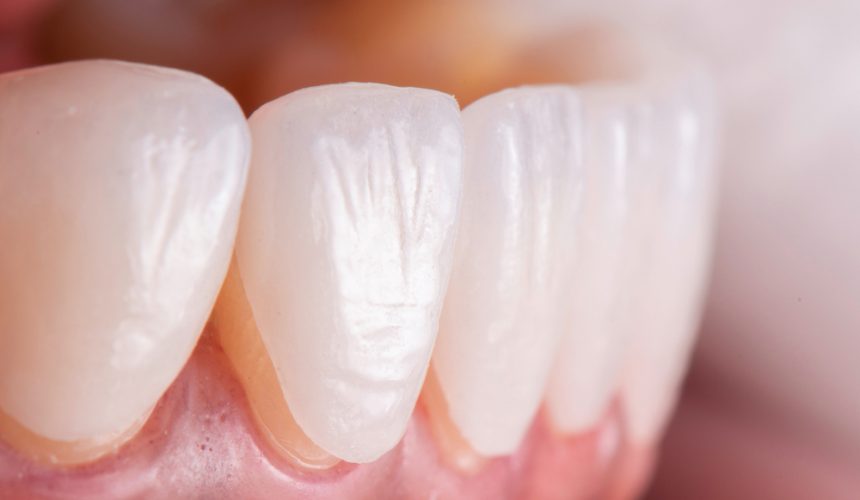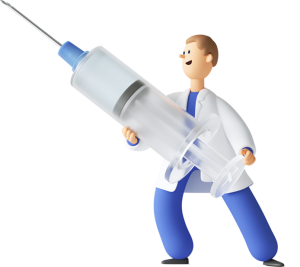
Porcelain Lamina (Leaf Porcelain) What?
Lamina veneers are very thin porcelains that can be applied especially on anterior teeth. Strengthening the physical properties of porcelain enabled them to be made much thinner. The aesthetic problem, which is one of the biggest concerns of the patients, has been tried to be solved with full crowns for years. However, this is an application that causes significant material loss in the tooth.
Removal of a large part of the tooth tissue can also bring about some problems. For this reason, the value of natural tooth tissue has been better understood over time and it is aimed to make the restorations with the least amount of material loss in the tooth, that is, to minimize the permanent tissue damage.
Laminate veneer applications, which can change both the shape and color of the tooth by making a minimum abrasion only on the visible part, instead of cutting the entire tooth and coating it, is one of the most used methods in aesthetic dentistry.
What are the Advantages of Lamina Treatment?
The desired appearance is achieved with 0.3-0.7 mm etching. Processing time takes 7-10 days on average.
Thanks to porcelain laminates, less intervention on the teeth is one of the biggest advantages. Thanks to this, the shortening of the working time causes the patients to relax. It is seen as a more conservative treatment for teeth due to minimal intervention. Another advantage is that it is close to natural teeth due to its light transmittance. Therefore, it becomes easier to achieve a natural look. There are also color options. It provides a perfect fit where the teeth and gums meet.
Having the desired aesthetic properties (such as color, shape) without spoiling the natural structure of the teeth can be achieved with porcelain lamina. Either no change is made or a minor correction is applied on the tooth. The amount removed from the tooth is limited to 0.3-0.7 mm. Thus, no teeth need to be cut (reduced).
The reflection on the gingival edge, which occurs in porcelain bridges with metal support, does not occur in lamina porcelains. In addition, since there are no separate sessions such as metal rehearsal, polish, zirconium, infrastructure rehearsal, the total treatment time is shorter. Lamina porcelains are rehearsed as polished. Since these are made in porcelain furnaces with a high degree of polish, they are resistant to abrasion. At the same time, it is not affected by substances such as tea, coffee, cigarettes, and the formation of calculus on it is minimized.
FREQUENTLY ASKED QUESTIONS
In which cases is Porcelain Lamina treatment applied?
Especially in crooked or gaping teeth that do not want to undergo orthodontic treatment, in cases where the teeth are short, to lengthen the teeth, to join the split teeth (diastema closure), in cases where there are serious stains on the teeth, in cases where the teeth are positioned behind and the lip is low, especially Porcelain lamina treatment is applied in cases where there are many fillings on the front teeth, in cases of discoloration and contact disorders, in cases of permanent discoloration and deformities due to antibiotics or other drugs, and in cases where the gums are excessively visible during smiling.
How long does the treatment take?
If there is no need for any treatment related to the gums, the treatment process will be completed within 1 week.
How does the treatment process progress?
After the teeth are worn, measurements are taken with special impression materials. An aesthetic lamina tooth is prepared by using the CAD CAM system in the laboratory, based on the precision tooth measure taken. The dental technician produces dental veneers that meet the needs, wishes and expectations of the patient by adding minor additions and polishing to this thin ceramic leaf porcelain.
Most of the time, new generation esthetic dental veneers, which are appreciated in the first rehearsal, can be sent back to the dental laboratory for correction when necessary.
At the finishing stage, a chemical that provides chemical adhesion is applied between the tooth surface and the leaf porcelain and it is permanently adhered.
Who is not treated with lamina treatment?
Lamina porcelain dental treatment will pose a danger in the future; It is not applied without treatment in people who clenched their teeth at night, in people with jaw disorders, in people with nail biting, pen biting and similar disorders, and in people with advanced gum recession.
What are the disadvantages?
Compared to other restorations, it has advantages in terms of health and aesthetics. However, it is a slightly more expensive system compared to others. It is a delicate technique. It requires a good clinical and laboratory work. Physicians and dental technicians must have sufficient technical knowledge and artistic skills on this subject.
- Empress Tooth (Full Porcelain) Veneer
- Zirconium Coating
- Dental Prostheses
- Inlay and Onlay Fillers
- Implant Treatment
- Periodontology (Gum Diseases)
- Teeth Whitening
- Orthodontic Treatment
- Teeth Grinding (BRUXISM)
- Digital Anesthesia
- Snoring Treatment
- Panoramic X-Ray
- Laser Dental Treatments
- Root Canal Treatment
- Tooth Stone Cleaning
- BONDING (Composite Lamina)
- Smile Design (Hollywood Smile)
- Porcelain Lamina (Leaf Porcelain)
